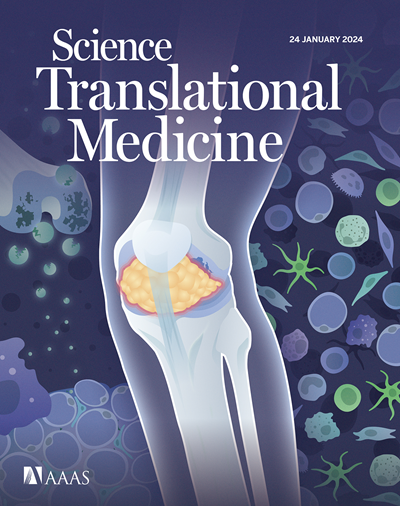Antibodies targeting Crimean-Congo hemorrhagic fever virus GP38 limit vascular leak and viral spread
IF 15.8
1区 医学
Q1 CELL BIOLOGY
引用次数: 0
Abstract
Crimean-Congo hemorrhagic fever virus (CCHFV) is a priority pathogen transmitted by tick bites, with no vaccines or specific therapeutics approved to date. Severe disease manifestations include hemorrhage, endothelial dysfunction, and multiorgan failure. Infected cells release the viral glycoprotein GP38, whose extracellular function is presently unknown. GP38 is considered an important target for vaccine and therapeutic design because GP38-specific antibodies can protect against severe disease in animal models, albeit through an unknown mechanism of action. Here, we showed that GP38 induces endothelial barrier dysfunction in vitro by disrupting the endothelial glycocalyx layer and triggering hyperpermeability. We also demonstrated that GP38 alone can cause vascular leak in a mouse model. We found that CCHFV infection leads to vascular leak in vivo, which was exacerbated by exogenous administration of GP38, facilitating dissemination of CCHFV into target tissues such as the liver. Protective antibodies that recognized specific antigenic sites on GP38, but not a protective neutralizing antibody binding the structural protein Gc, potently inhibited endothelial hyperpermeability in vitro and vascular leak in vivo during CCHFV infection. This work uncovers a function of the circulating viral protein GP38 as a viral toxin in CCHFV pathogenesis and elucidates a potential mode of action of nonneutralizing yet protective GP38-specific antibodies.针对克里米亚-刚果出血热病毒GP38的抗体限制血管泄漏和病毒传播
克里米亚-刚果出血热病毒(CCHFV)是一种通过蜱虫叮咬传播的重点病原体,迄今尚未批准疫苗或特异性治疗方法。严重的疾病表现包括出血、内皮功能障碍和多器官功能衰竭。感染细胞释放病毒糖蛋白GP38,其细胞外功能目前尚不清楚。GP38被认为是疫苗和治疗设计的重要靶点,因为GP38特异性抗体在动物模型中可以预防严重疾病,尽管其作用机制尚不清楚。在这里,我们发现GP38通过破坏内皮糖萼层和引发高通透性来诱导内皮屏障功能障碍。我们还在小鼠模型中证明了GP38单独可以引起血管泄漏。我们发现CCHFV感染会导致体内血管渗漏,外源性给药GP38会加剧血管渗漏,促进CCHFV传播到肝脏等靶组织。识别GP38特异抗原位点的保护性抗体,而不是结合结构蛋白Gc的保护性中和抗体,在体外有效地抑制CCHFV感染期间内皮细胞的高渗透性和体内血管渗漏。这项工作揭示了循环病毒蛋白GP38在CCHFV发病机制中作为病毒毒素的功能,并阐明了非中和但保护性GP38特异性抗体的潜在作用模式。
本文章由计算机程序翻译,如有差异,请以英文原文为准。
求助全文
约1分钟内获得全文
求助全文
来源期刊

Science Translational Medicine
CELL BIOLOGY-MEDICINE, RESEARCH & EXPERIMENTAL
CiteScore
26.70
自引率
1.20%
发文量
309
审稿时长
1.7 months
期刊介绍:
Science Translational Medicine is an online journal that focuses on publishing research at the intersection of science, engineering, and medicine. The goal of the journal is to promote human health by providing a platform for researchers from various disciplines to communicate their latest advancements in biomedical, translational, and clinical research.
The journal aims to address the slow translation of scientific knowledge into effective treatments and health measures. It publishes articles that fill the knowledge gaps between preclinical research and medical applications, with a focus on accelerating the translation of knowledge into new ways of preventing, diagnosing, and treating human diseases.
The scope of Science Translational Medicine includes various areas such as cardiovascular disease, immunology/vaccines, metabolism/diabetes/obesity, neuroscience/neurology/psychiatry, cancer, infectious diseases, policy, behavior, bioengineering, chemical genomics/drug discovery, imaging, applied physical sciences, medical nanotechnology, drug delivery, biomarkers, gene therapy/regenerative medicine, toxicology and pharmacokinetics, data mining, cell culture, animal and human studies, medical informatics, and other interdisciplinary approaches to medicine.
The target audience of the journal includes researchers and management in academia, government, and the biotechnology and pharmaceutical industries. It is also relevant to physician scientists, regulators, policy makers, investors, business developers, and funding agencies.
 求助内容:
求助内容: 应助结果提醒方式:
应助结果提醒方式:


